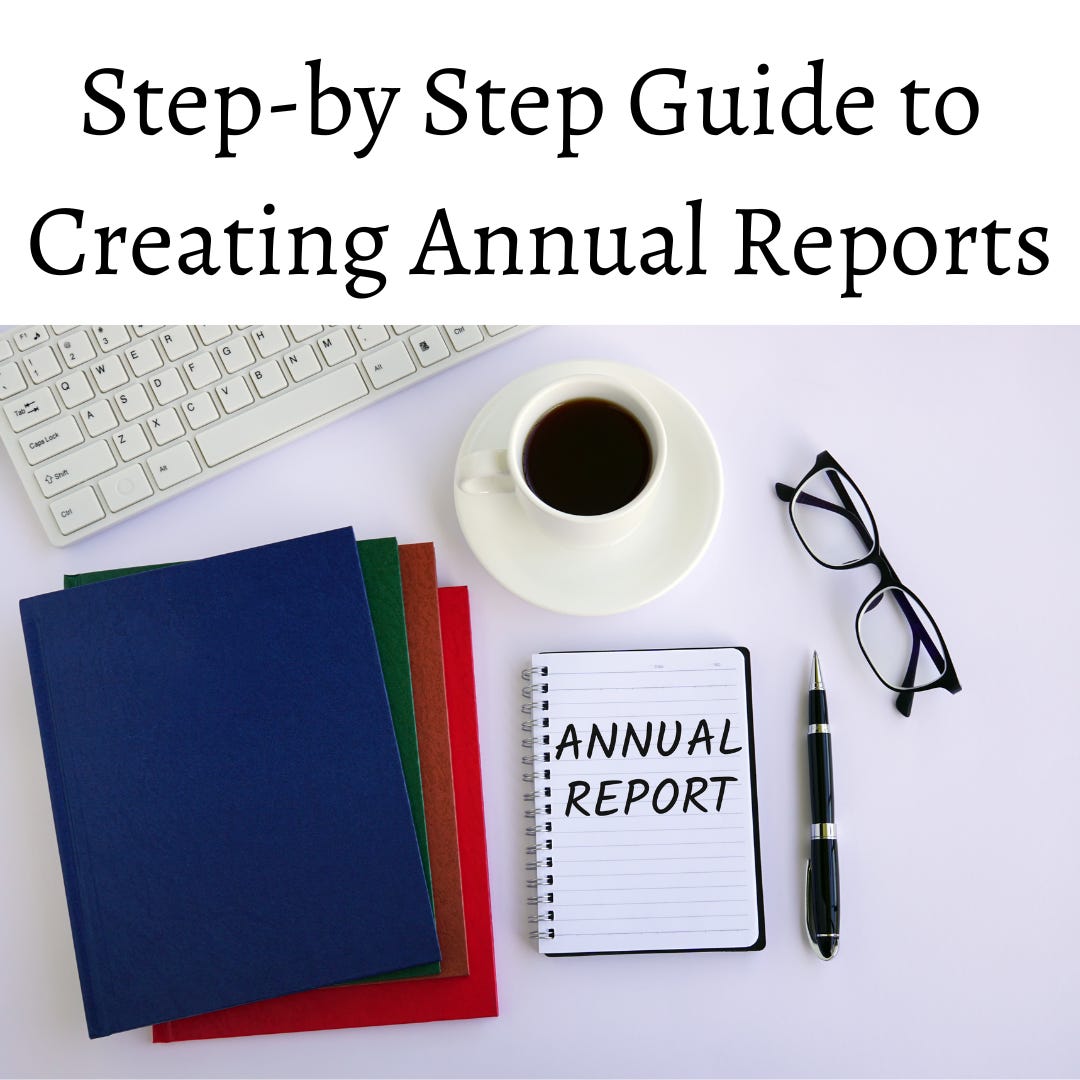How to Develop a Comprehensive Annual Report for Your Nonprofit
An effective annual report not only showcases your organization's achievements but also builds trust and fosters deeper connections with your supporters.
How to Develop a Comprehensive Annual Report
Creating a comprehensive annual report is crucial for nonprofits to maintain transparency, accountability, and engagement with donors and stakeholders. An effective annual report not only showcases your organization's achievements but also builds trust and fosters deeper connections with your supporters. Here is a step-by-step guide to help you develop an impactful annual report.
Step 1: Define the Purpose and Audience
Before you start, clarify the purpose of your annual report. Are you aiming to provide a detailed financial overview, highlight program achievements, or thank donors and volunteers? Understanding your audience—whether it's donors, grantors, volunteers, or the general public—will help tailor the content and tone of your report.
Step 2: Gather Financial Data
Compile accurate financial data for the fiscal year. This includes:
Income Statements: Detailing revenue from donations, grants, and other sources.
Balance Sheets: Showing assets, liabilities, and net assets.
Cash Flow Statements: Highlighting cash inflows and outflows.
Ensure that the financial data is reviewed and audited (if applicable) to ensure accuracy and compliance with accounting standards.
Step 3: Highlight Key Achievements
Identify and document the significant accomplishments of your organization over the past year. This could include:
Program Successes: Highlight the impact of your programs with statistics, stories, and testimonials.
Milestones: Note any major milestones achieved, such as the launch of new initiatives, partnerships, or expansions.
Awards and Recognition: Include any awards or recognition your organization received.
Step 4: Incorporate Storytelling
Engage your readers by incorporating storytelling elements. Share compelling stories of individuals or communities who benefited from your services. Use quotes, testimonials, and case studies to bring your work to life and illustrate the real-world impact of your programs.
Step 5: Include Donor and Volunteer Recognition
Acknowledge the contributions of your donors and volunteers. This can be done through:
Donor Lists: Recognize major donors, grantors, and sponsors.
Volunteer Highlights: Feature stories or profiles of dedicated volunteers.
Step 6: Present Future Goals and Objectives
Outline your organization’s goals and objectives for the upcoming year. This section should convey a sense of direction and commitment to your mission, helping to inspire continued support and engagement from your stakeholders.
Step 7: Design and Layout
A well-designed report enhances readability and engagement. Consider the following design elements:
Visuals: Use high-quality images, infographics, and charts to illustrate key points and data.
Consistent Branding: Ensure the design aligns with your organization’s branding guidelines.
Clear Structure: Organize the report into clear, logical sections with headings and subheadings.
Step 8: Write and Edit the Content
Draft the content, ensuring it is clear, concise, and free of jargon. Engage professional writers or editors if necessary to polish the text. Pay attention to grammar, punctuation, and style consistency.
Step 9: Review and Approve
Before finalizing the report, have it reviewed by key stakeholders, including board members and senior management. Ensure all factual information is accurate and that the report reflects the organization’s achievements and financial status accurately.
Step 10: Distribute the Report
Decide on the distribution method. Options include:
Print Copies: Distribute at events, meetings, or by mail to key supporters.
Digital Version: Publish on your website, share via email, and promote through social media.
Presentations: Use the report as a basis for presentations to donors, grantors, and other stakeholders.
Developing a comprehensive annual report is a vital practice for nonprofits to showcase transparency, accountability, and impact. By following these steps, you can create an annual report that not only informs but also engages and inspires your donors and stakeholders, fostering continued support for your mission.


